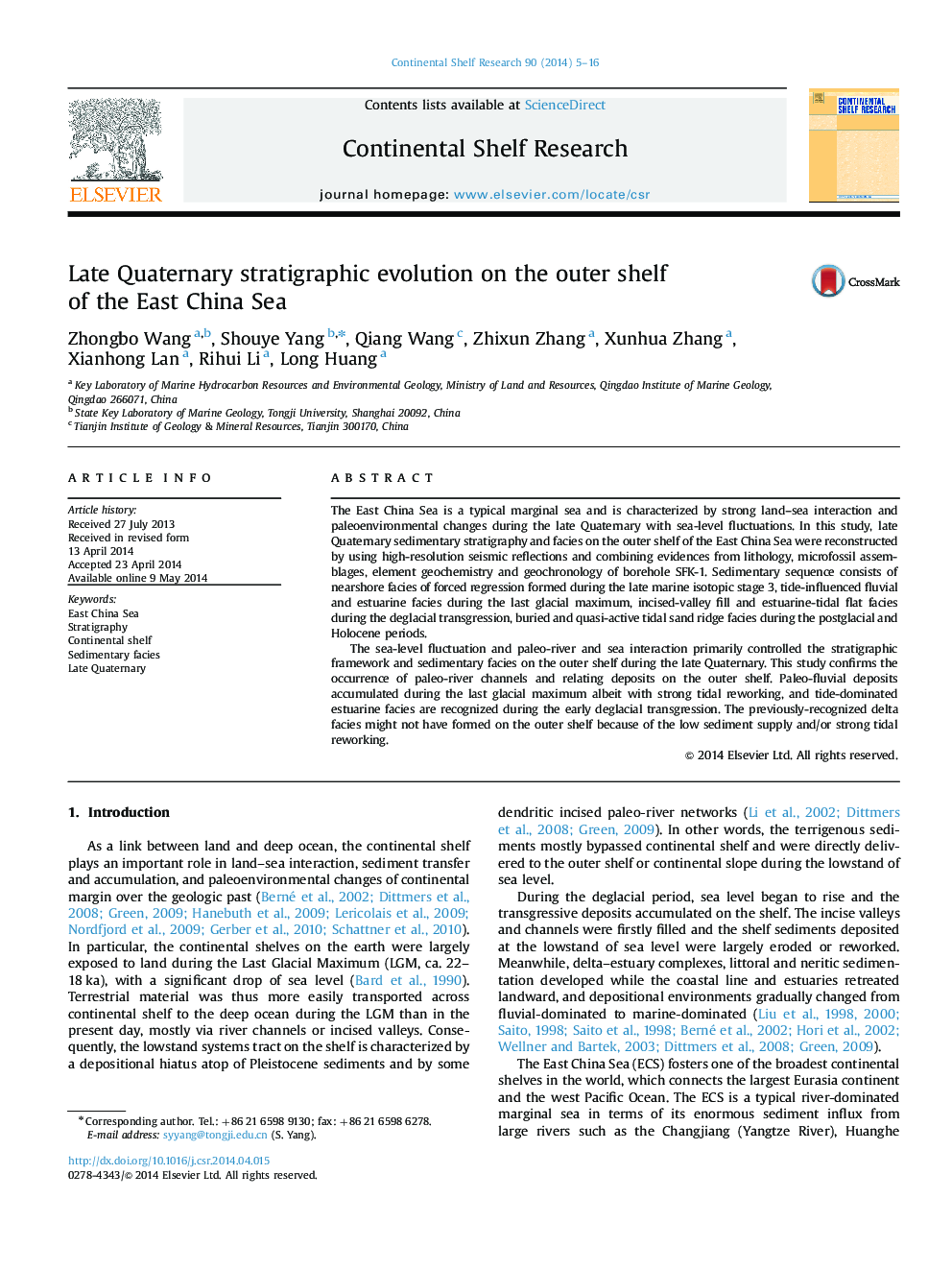| Article ID | Journal | Published Year | Pages | File Type |
|---|---|---|---|---|
| 4531794 | Continental Shelf Research | 2014 | 12 Pages |
•We examined late Quaternary stratigraphy on the outer shelf of the East China Sea.•Sea level controlled the stratigraphic framework and sedimentary facies.•The paleo-fluvial deposits were recognized on the outer shelf.•Strong tidal processes characterized the sedimentary facies since the last glaciation.
The East China Sea is a typical marginal sea and is characterized by strong land–sea interaction and paleoenvironmental changes during the late Quaternary with sea-level fluctuations. In this study, late Quaternary sedimentary stratigraphy and facies on the outer shelf of the East China Sea were reconstructed by using high-resolution seismic reflections and combining evidences from lithology, microfossil assemblages, element geochemistry and geochronology of borehole SFK-1. Sedimentary sequence consists of nearshore facies of forced regression formed during the late marine isotopic stage 3, tide-influenced fluvial and estuarine facies during the last glacial maximum, incised-valley fill and estuarine-tidal flat facies during the deglacial transgression, buried and quasi-active tidal sand ridge facies during the postglacial and Holocene periods.The sea-level fluctuation and paleo-river and sea interaction primarily controlled the stratigraphic framework and sedimentary facies on the outer shelf during the late Quaternary. This study confirms the occurrence of paleo-river channels and relating deposits on the outer shelf. Paleo-fluvial deposits accumulated during the last glacial maximum albeit with strong tidal reworking, and tide-dominated estuarine facies are recognized during the early deglacial transgression. The previously-recognized delta facies might not have formed on the outer shelf because of the low sediment supply and/or strong tidal reworking.
